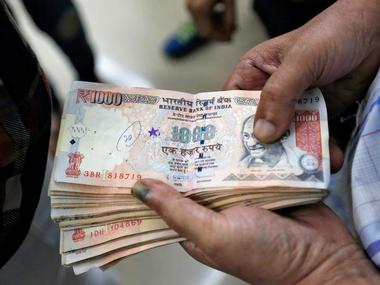Even as the Narendra Modi government’s five-year term is coming to an end in another two months, we still know very little, officially, about the impact of government’s biggest economic experiment executed in November 2016 — demonetisation of Rs 500 and Rs 1000 notes. Both the government and the central bank seem to have no interest in studying the crucial after-effects of demonetisation,it appears. Else, how would you explain the following? In an RTI response, the Reserve Bank of India (RBI) said that it has
no data on the invalidated Rs 500 and Rs 1,000 notes used to pay for utility bills such as fuel at petrol pumps, where black money holders are believed to have rushed in to get rid part of the illegal notes in their custody. These notes are believed to have formed a good part of the demonetised currency that returned to the banking system. These exits for banned notes, by no means, were insignificant and included a long list — government hospitals, railway tickets, public transport, airline tickets at airports, milk booths, crematoria/burial grounds, petrol pumps, metro rail tickets, purchase of medicines on doctor prescription from the government and private pharmacies, LPG cylinders, railway catering, electricity and water bills, ASI monument entry tickets and highway toll. Why doesn’t the RBI have data on the amount of high value notes passed through these channels? [caption id=“attachment_4199607” align=“alignleft” width=“380”] A file image of Rs 1,000 notes. Reuters[/caption] Secondly, the government itself has admitted that it has not studied the after-effects of demonetisation, none at all. As Bloomberg has reported here, “No Madam,” was the Indian
junior finance minister’s reply to a lawmaker’s question in the Parliament on 14 December on whether the government had studied the after-effects of the note ban. Remember, demonetisation wasn’t yet another routine policy move of the government. It was, by far, the boldest and most disruptive economic move of this government that will have far-reaching implications in Asia’s third largest economy. Not surprisingly, this has been the subject of research studies across the world including by a group of US economists, one of whom is the current International Monetary Fund (IMF) chief economist, Gita Gopinath. What does the lack of enthusiasm on the part of the government to put the results of the very move it launched tell the world? Third, another RTI revelation is that, Prime Minister Narendra Modi went ahead
with the announcement on 8 November, 2016 to invalidate Rs 500 and Rs 1000 notes, even before the RBI approval came. The RBI board had met just two and hours prior to the prime minister’s announcement. The RBI approval reportedly came much later, on 16 December. All of us knew from day one that demonetisation was a political decision, not a central bank decision. Even then, is it a justifiable move for any government to implement a currency experiment of this scale, however political it is in nature, without the approval of the monetary authority of the country? The lack of availability of crucial data on demonetisation is a major concern and only leads to more questions about its perceive gains with respect to the primary goals — curbing fake currency, recovering black money and terminating cash-based corruption. What we know so far is that more than 99 percent of the demonetised currency is back in the system, no significant amount of blackmoney has been recovered from hidden shelves and underground vaults where they should have been stacked up by tax cheats, nothing much has happened to fake currency and corruption. The RBI, in the first place, was not a big believer in the idea that demonetisation could kill black money because most of the unaccounted wealth has already changed form into real assets. Those who laughed at former Prime Minister, Manmohan Singh for predicting a 2 percent fall in GDP post note ban, would not do the same after looking at the findings of a working paper from National Bureau of Economic Research (NBER) titled as ‘Cash and the economy: Evidence from India’s demonetisation’ authored by Gabriel Chodorow-Reich, Gita Gopinath, Prachi Mishra, and Abhinav Narayanan. The paper showed demonetisation indeed lowered the GDP (gross domestic product) growth by at least 2 percent in the near-term post demonetisation. “Our results imply demonetisation lowered the growth rate of economic activity by at least 2 percentage point in the quarter of demonetisation,” the paper said. It is also known that note ban has had serious impact on the
informal sector , where cash played a crucial role. After launching such a massive disruptive move, the least the government could have done was to commission a proper study on the effects of the economic experiment, take a stock of the move and present the facts before the world. Its silence and missing critical data points demonstrate the lack of conviction in the move itself and also how pathetically the Indian central bank has failed to do its job during and after the demonetisation episode.
Remember, demonetisation wasn’t yet another routine policy move of the government.
Advertisement
End of Article


)

)
)
)
)
)
)
)
)



